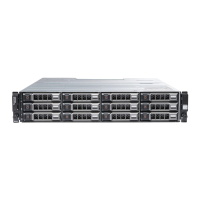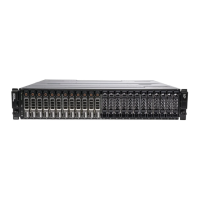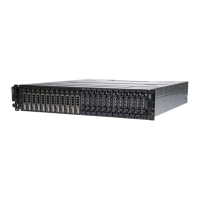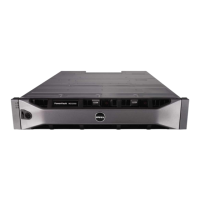Dell PowerVault MD3600f/MD3620f Remote Replication Functional Guide
Page 3
There are some key, critical design issues regarding remote replication that need to be addressed before
designing a DR solution using remote replication.
• Distances involved (primarily the distance between the primary and secondary sites)
• The amount of data required to be replicated
• The recovery objectives should a disaster occur
• The requirements for database applications
For more details about designing a RR solution, please refer to the
Dell PowerVault MD3600f/MD3620f
Remote Replication Design Guide.
Remote Replication Concepts
This section introduces you to primary, secondary, and replication repository, and describes how they
interact to replicate data between arrays using the Remote Replication feature.
Primary and Secondary Virtual Disks
When you start remote replication, a replicated virtual disk pair is created and consists of a primary
(local) virtual disk on the primary storage array and its replicated pair virtual disk on the secondary
storage array.
Primary (Local) Virtual Disk
The primary virtual disk is the virtual disk that accepts host I/O and stores application data. When the
replication relationship is first created, data from the primary virtual disk is copied in its entirety to the
secondary virtual disk. This process is known as a full synchronization and is controlled by the local
MD36X0f storage array and owner of the primary virtual disk. During a full synchronization, the
primary virtual disk remains fully accessible for all normal read and write I/O operations. The local
MD36X0f storage array is responsible for initiating remote writes to the secondary virtual disk to keep
the data on the two virtual disks synchronized.
Secondary (Remote) Virtual Disk
The remote or secondary MD36X0f storage array receives remote writes from the primary MD36X0f
storage array and applies these writes to the remote virtual disks. While these secondary virtual
disks(replicas) are also regular virtual disks they are not directly accessible for I/O by any hosts: the
remote storage array will not accept direct host write requests for those virtual disks acting as remote
pairs. This is to prevent unintentional corruption of the data being replicated to these secondary virtual
disks. Virtual disks in secondary mode can be mapped to hosts, and are seen as read only disks until
later promoted to a primary mode (a role reversal). MD36X0f storage also provides a feature that
allows secondary virtual disks to be read through the use of the Snapshot function.
: Only standard virtual disks may be used in any replicated virtual disk pair (no Snapshot virtual
disks). There can be up to 16 defined virtual disk replication pairs per MD3600f storage array.
Fail Over/Role Reversal
During normal RR operations, the remote virtual disks are in target mode and not in primary virtual disk
mode. This prevents host access of these virtual disks for normal I/O. In the event of a disaster or a
catastrophic failure of the primary site, a role reversal can be performed to promote the secondary

